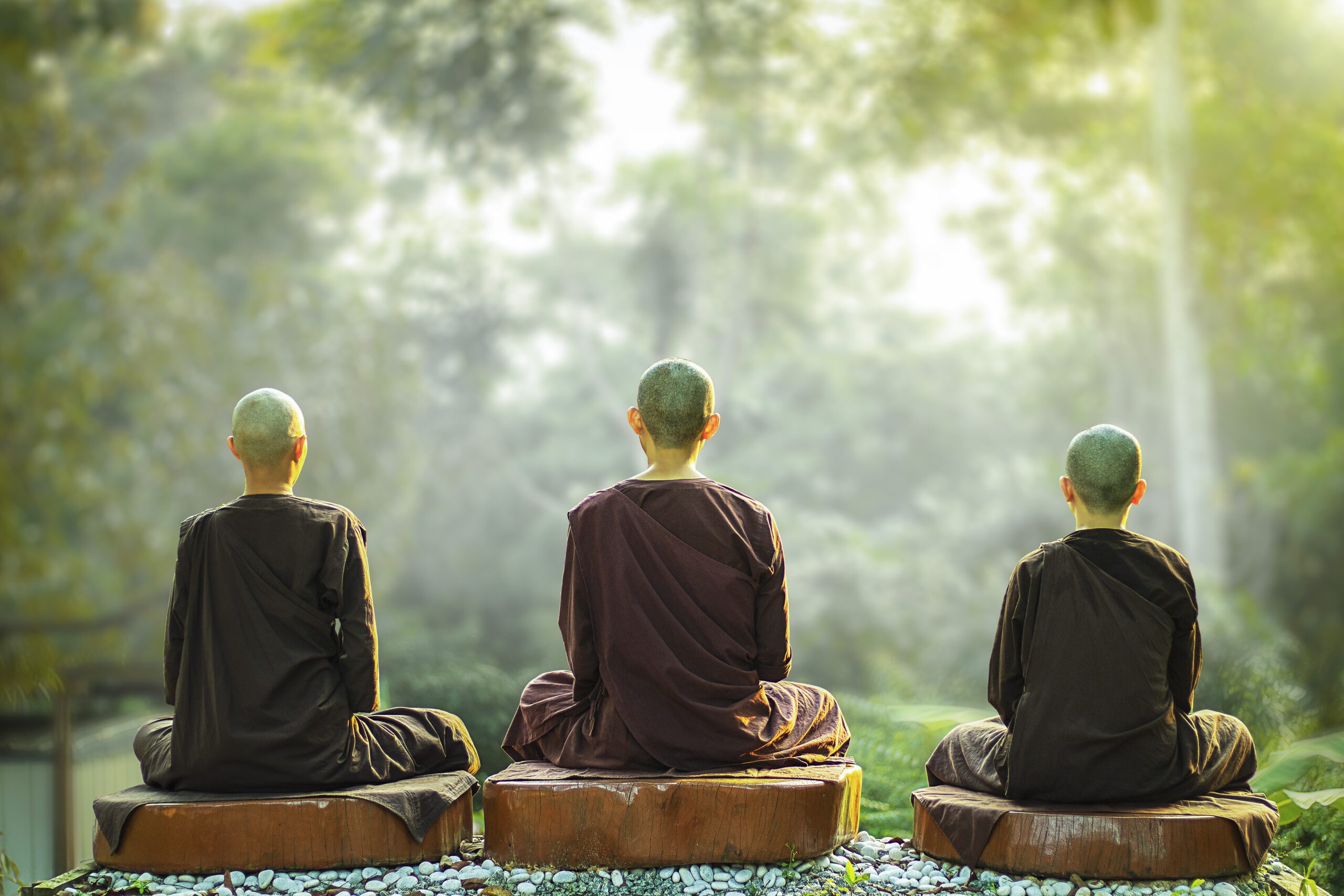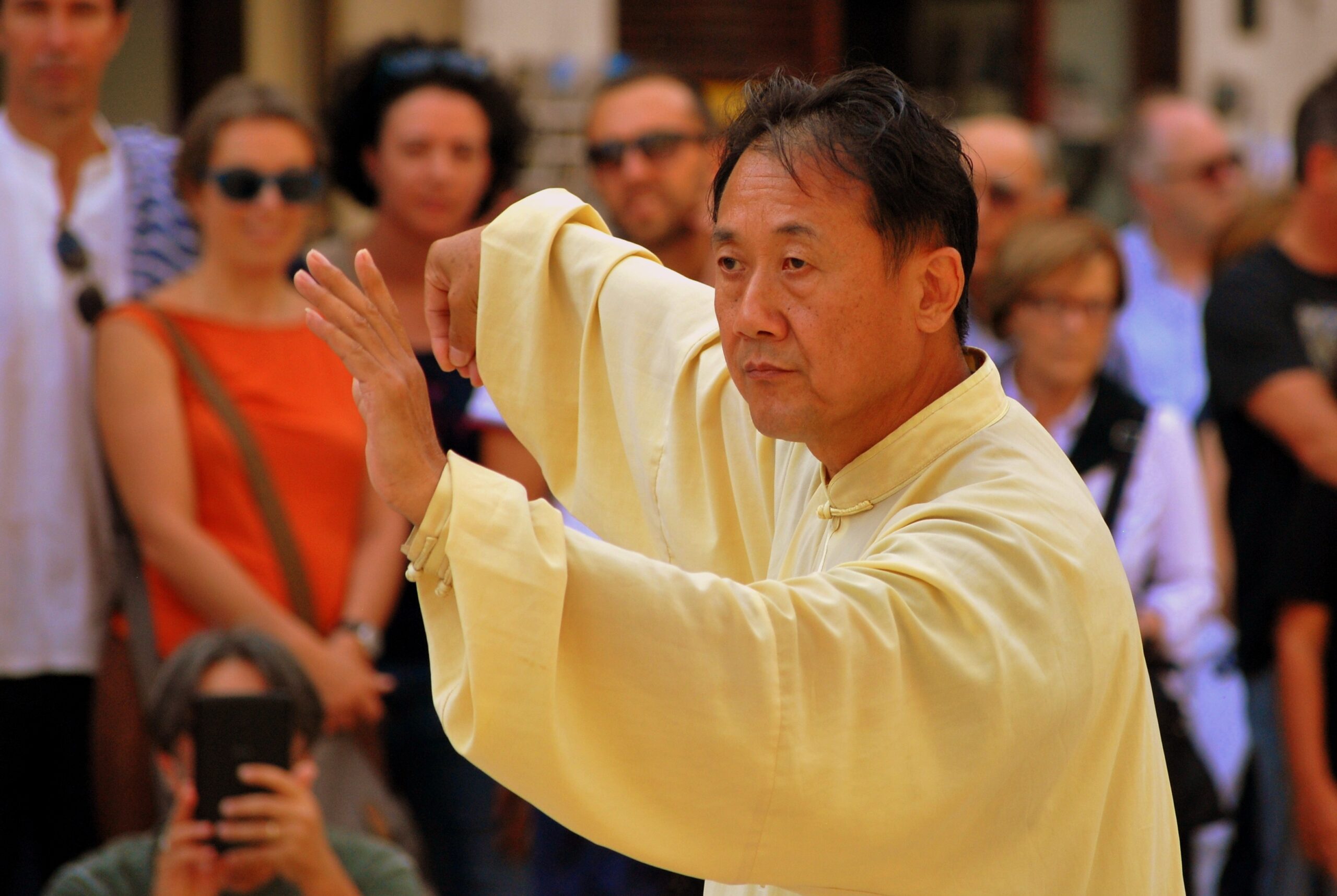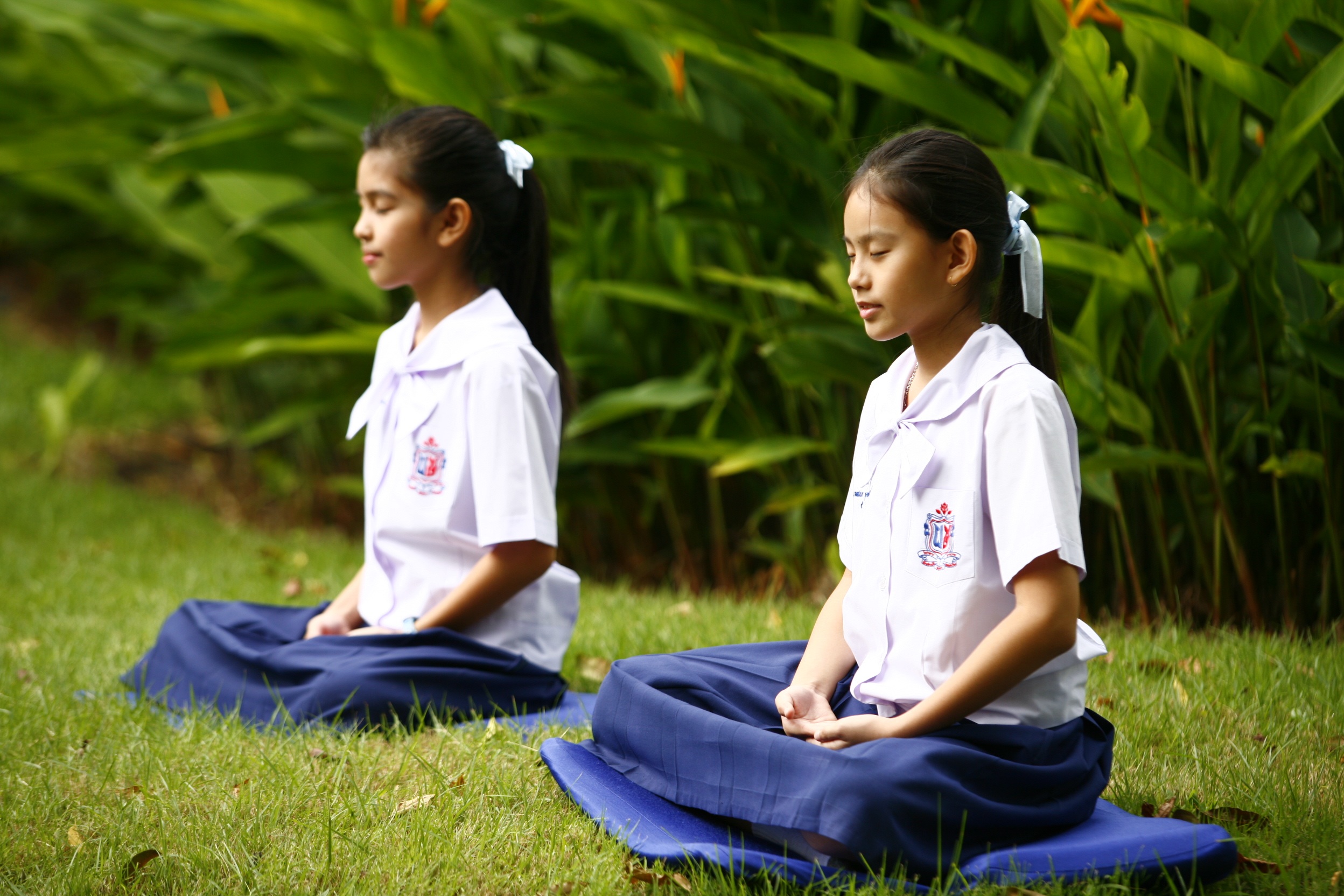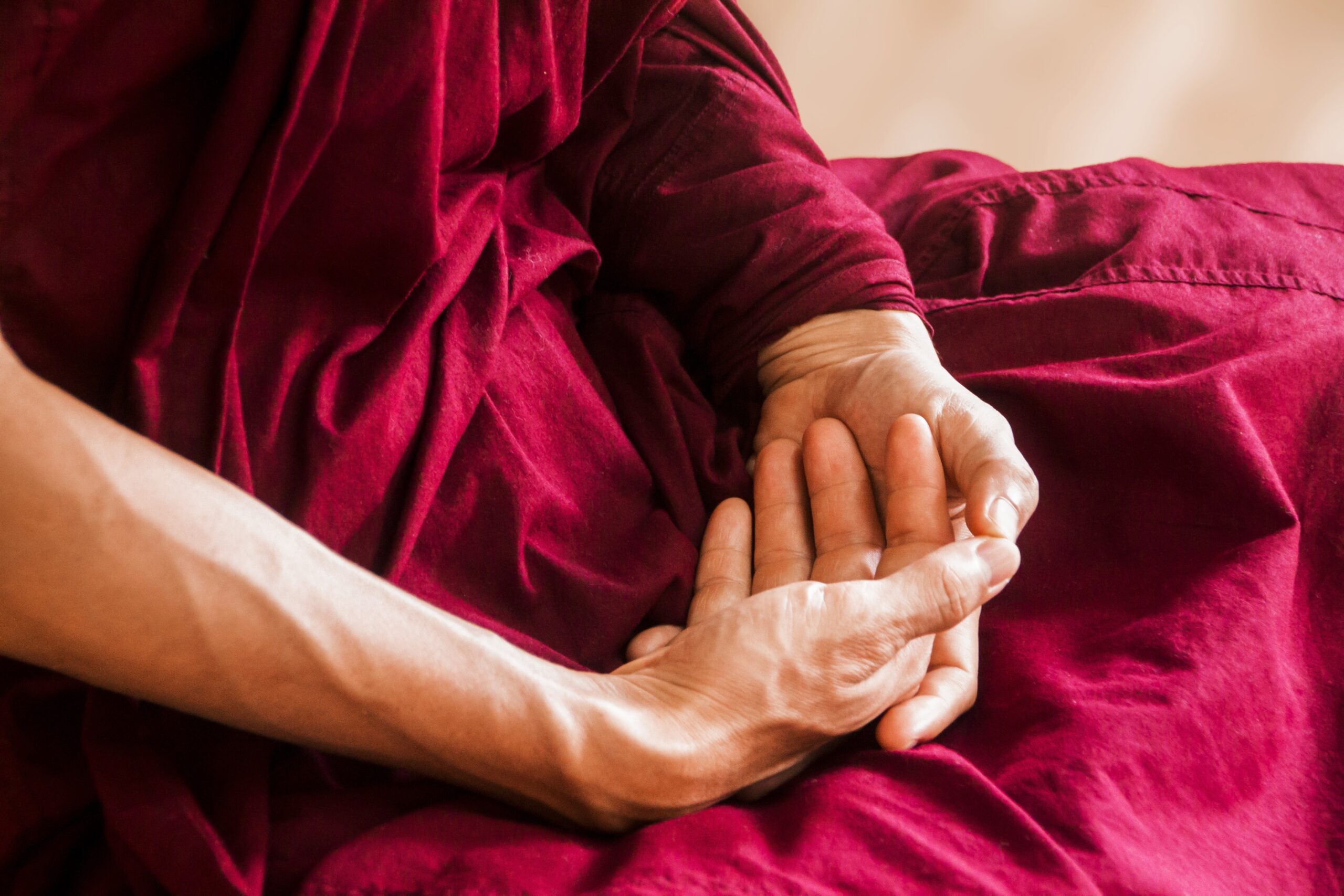Recumbent Meditation Positions
Sitting meditation positions and body postures are most common but there are also recumbent meditation postures and body poses that are less well known to beginning practitioners.
When lying flat on your back for meditation, observe the following steps for correct alignment of meditation postures and body poses in the recumbent position:
- Place a cushion or pillow under the knees to allow them to bend slightly to keep the gates of energy open in the joints and allow the vital chi energy to flow through unimpeded.
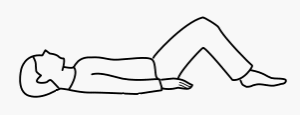
An alternative option is to bend the knees and place the soles of the feet so that they face each other, knees extending outward on each side.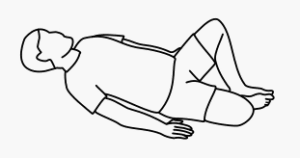
- Your hands can be positioned in a resting position, palms facing down on the chest, fingers slightly bent and spread apart. Or they can assume a mudra position (see Hand/Finger Positioning ) on your Dantian.Or they can be placed one on top of another cupping the area of the Dantian.For females, place the right hand over the left with the right thumb inserted in the left palm. For males, place the left hand over the right with the left thumb inserted in the right hand.This allows you to properly connect the yin and yang pathways that intersect in the hands to the rest of the body.
- Place the tongue at the roof of your mouth where teeth and palate meet to form a bridge for the chi energy to flow through.
- As in all meditation positions and body postures, you should position your head so that the chin is slightly tucked in toward the chest, to align the head with the rest of your body posture.
Another recumbent position is lying on your side. It is a position adopted in Shui Gong, a form of Sleeping Meditation.
Unlike the other poses, this one is practiced specifically for meditation during sleep. The obvious benefit, of course, is that you can save on meditation time and at the same time, get a quality restful sleep.
Studies have shown that yogis and qigong practitioners who practice this form of meditation exhibit the same brainwave frequency pattern of someone in deep meditation, while at the same time cycling through regular sleep patterns.
This particular type of qigong meditation is commonly practiced by adept practitioners who have a strong foundation in qigong meditation, and their internal energy and yinian consciousness are fully refined and developed.
If you think you fall into this category and wish to master Sleeping Meditation, you can subscribe to the Sleeping Meditation ecourse available on this site.
And there you have it — the steps to all the different meditation positions and body postures you can assume in recumbent chi kung/qigong meditation. Experiment and choose the positions that you find most comfortable for you.
